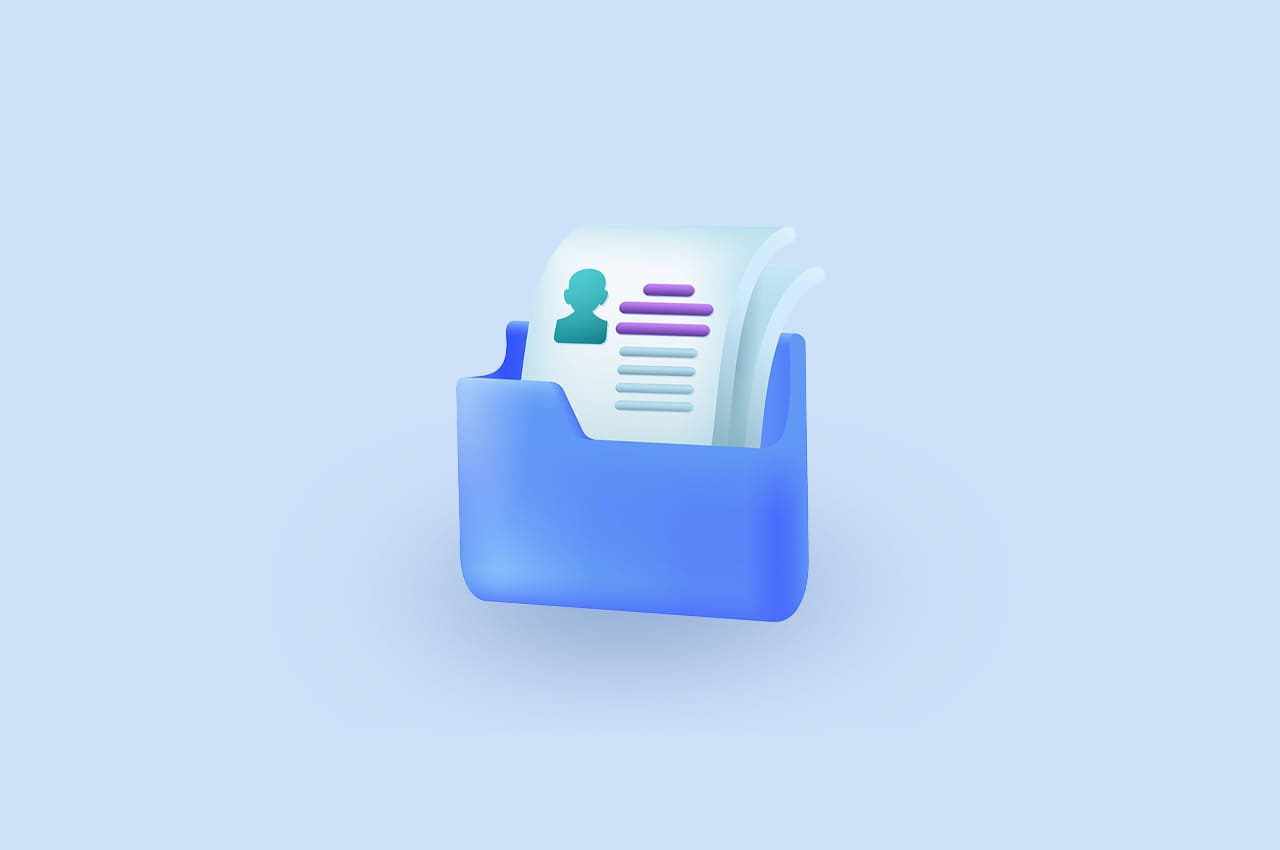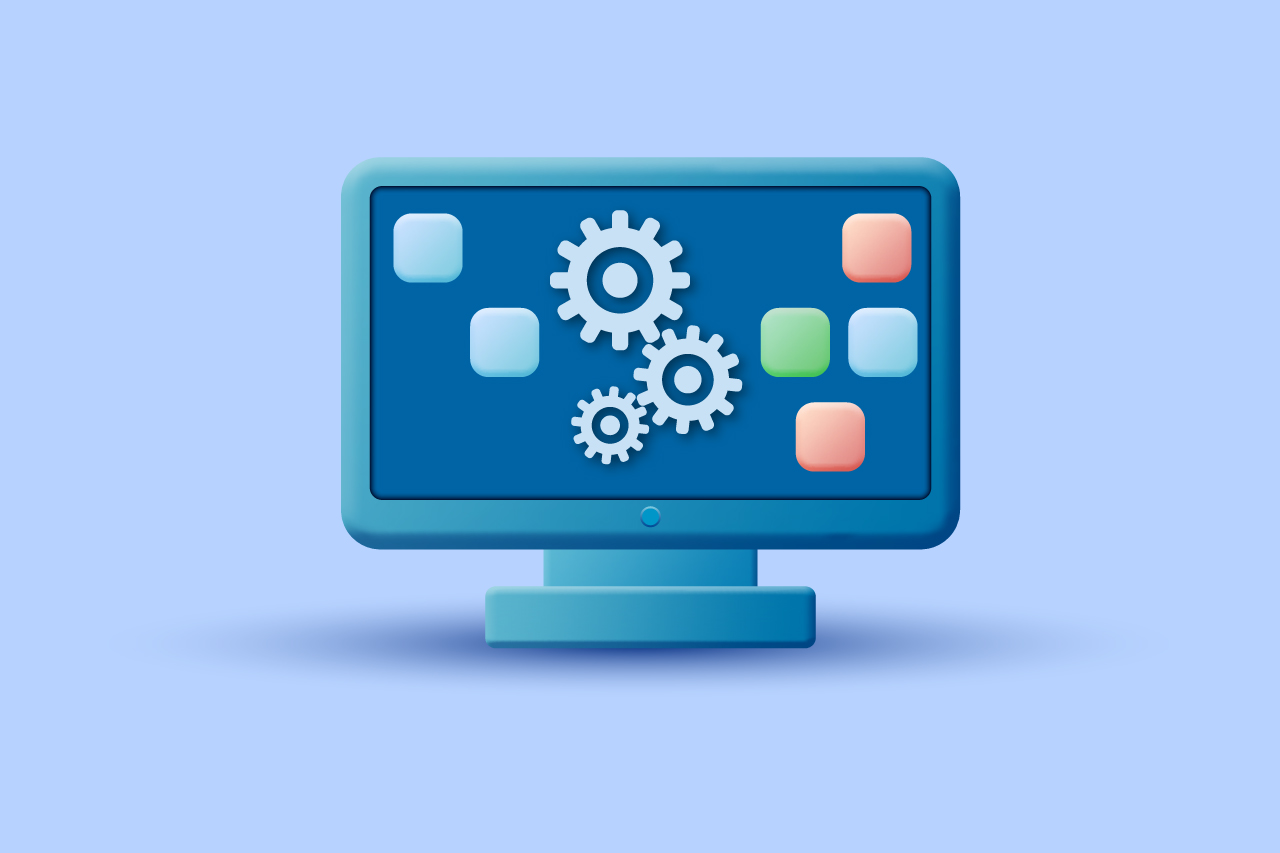What is HRIS & How to Select the Right HRIS for Your Business in 2023?

Get ready to explore the power of HRIS! We’re here to guide you through what HRIS is and why it’s so important for companies. Let’s dive into the world of HRIS to understand how it can make HR tasks easier and improve how organizations work.
Join us on this journey to discover the ins and outs of HRIS and how it’s shaping the future of work.
What is HRIS?
HRIS, which stands for Human Resources Information System, is essentially a digital tool HR teams use to store and handle important employee information. This can range from salary details, benefits, and performance assessments to training records.
The primary objective of HRIS is to simplify and enhance HR responsibilities, streamlining tasks for increased efficiency. By automating a range of processes, HRIS assists professionals in effectively handling extensive employee-related information. In a nutshell, it’s like a digital hub for all things HR, making sure important information is organized and accessible.
Why is HRIS important?
If you’re familiar with the world of human resources, you understand the complexity of managing various tasks and responsibilities. Juggling these tasks, especially with remote teams, larger workforces, and varying processes due to high turnover, can be quite challenging.
This is precisely where an HRIS steps in to offer remarkable support and efficiency to your HR operations. Here’s how an HRIS can transform your work:
1. Enhanced Organization: An HRIS enables you to better organize your workload and the entire employee data within your company. It’s like a digital filing cabinet that keeps everything in its right place.
2. Effortless Streamlining: With an HRIS, you can say repetitive tasks goodbye. The system takes care of numerous tasks automatically, freeing up your time and guaranteeing that your endeavors are channeled into more productive avenues.
3. Crystal-Clear Transparency: Maintaining transparency is crucial in the complex world of HR, where numerous team members and employees are involved. An HRIS acts as a single source of truth for all HR-related matters, reducing confusion and ensuring everyone is on the same page.
4. Swift Decision-Making: Having all employee information readily accessible in one place allows for quicker and well-informed decisions. This can be especially handy when dealing with matters like staffing, performance evaluations, and benefits administration.
5. Data Security: Protecting sensitive employee data is a top priority for any HR department. An HRIS provides a secure platform for storing and managing this information, reducing the risk of data breaches.
In essence, an HRIS revolutionizes how HR tasks are handled, creating a smoother, more organized, and more efficient experience for both HR professionals and the entire company.
Essential Features of HRIS Software:
HRIS software encompasses a multitude of features meticulously crafted to address distinct facets of human resources management. These encompass:
1. Streamlined Recruitment and Onboarding: A comprehensive HRIS often integrates an applicant tracking system, optimizing the hiring process. Additionally, it facilitates seamless onboarding through tools like policy reviews with e-signing and a secure collection of employee details.
2. Efficient Payroll Management: Managing payroll seamlessly ranks among HR’s pivotal responsibilities. An HRIS efficiently oversees this process, from initial compensation input to automated payment distribution. It offers insights from a financial perspective and tracks changes due to salary increments and internal transitions.
3. Digitized Records Management: Embracing a paperless approach, an HRIS digitizes records, diminishing or eliminating the need for physical documentation. This eradicates filing complexities, enhances document accessibility, and contributes to eco-friendly practices.
4. Advanced Applicant Tracking: An HRIS adeptly tracks applicant information, encompassing resumes, interviews, evaluations, and contact details, streamlining the recruitment journey.
5. Insightful People Analytics: People analytics, a pivotal HR facet, takes center stage in many HRIS systems. It identifies workforce opportunities and gaps, shaping strategies encompassing diversity, equity, inclusion, retention, and internal growth.
6. Precise Time and Attendance Tracking: Crucial for hourly or contract workers, an HRIS efficiently monitors time and attendance, ensuring compliance with payment regulations, and facilitating efficient workforce management.
7. Effective Benefits Administration: Managing employee benefits forms a core HR task. An HRIS with this feature centralizes benefits management, streamlining processes like onboarding, open enrollment, and benefits selection.
8. Mobile App Accessibility: Many HRIS platforms offer mobile capabilities, empowering HR professionals to operate while on the move, and catering to varied work scenarios beyond traditional office settings.
9. Seamless Integrations: Ensuring harmonious interaction with existing software tools within your tech ecosystem, an HRIS seamlessly integrates into your company’s tech stack.
10. Empowering Employee Self-Service: Addressing frequent employee requests for information and updates, an HRIS provides employees with a personalized access portal, enabling prompt retrieval of essential data, such as time off, benefits, and work hours.
11. Robust Reporting Capabilities: HRIS software is equipped with robust reporting functionalities, allowing for the creation of insightful reports to inform strategic business decisions. These reports encompass diverse areas of interest, from retention to diversity, equity, and inclusion (DEI), fostering informed organizational strategies.
In essence, HRIS software serves as a versatile toolkit, enhancing the efficiency, transparency, and strategic impact of HR operations within modern organizational landscapes.
Understanding the Different Types of HRIS Software:
Within the realm of HRIS software, there exist three primary categories, which can occasionally exhibit overlapping functionalities.
These categories are delineated as follows:
- Human Resources Information Systems (HRIS): Functioning as the foundational hub of HR operations, HRIS software serves as a repository for essential HR data. This encompasses an array of particulars ranging from employee records, remuneration, and benefits to organizational hierarchies, policies, and procedures. This comprehensive consolidation occurs within a unified platform, which may be hosted either on-premises or within a cloud-based infrastructure.
- Human Resources Management Systems (HRMS): HRMS software represents an advancement beyond HRIS, incorporating additional managerial and automation attributes. In conjunction, with data storage, HRMS facilitates diverse administrative tasks. This encompasses facets such as seamless assimilation of new personnel, orchestration of performance assessments, and meticulous time tracking.
- Human Capital Management (HCM): Distinctly comprehensive, HCM constitutes a holistic suite encompassing the realms of HRIS and HRMS, supplemented by supplementary tools tailored to higher-level, strategic pursuits. This encompassment extends to employee engagement initiatives, fostering career progression, and optimizing overall workforce productivity. Effectively, HCM operates as an elevated orchestrator of human resources, aligning organizational objectives with the cultivation of a thriving workforce.
Think of HRIS, HRIS System, HRIS Software, and HRM Software like different nicknames for a close friend. They all point to the same helpful tool that HR uses to handle employee stuff, like pay, benefits, and other important details. So, no matter which name you use, it’s all about using smart technology to make HR tasks easier.
In essence, this hierarchical classification entails a fundamental database underpinning (HRIS), fortified by a managerial augmentation (HRMS), culminating in an all-encompassing strategic conductor (HCM), collectively harmonizing to enhance the efficiency and effectiveness of HR operations.
Advantages of HRIS Software:
Implementing HRIS software brings forth a plethora of both tangible and intangible benefits that resonate across various organizational dimensions.
Key advantages encompass:
1. Informed Decision-Making: By consistently tracking multifaceted employee aspects such as leave, benefits, tenure, attendance, and productivity, an HRIS empowers strategic decision-making. Invaluable insights aid in steering the organization’s course effectively.
2. Elevated Employee Experiences: An HRIS serves as a unified hub where management and employees access comprehensive information at their fingertips. This includes policies, compensation details, performance records, and time-off requests, fostering a streamlined and transparent employee experience.
3. Heightened Productivity: Seamlessly managing time-offs and work processes prevents scheduling clashes and maintains productivity. An HRIS adeptly orchestrates such intricacies, preventing disruptions caused by a mass influx of leave requests.
4. Automated Efficiency: Particularly crucial for HR teams with limited resources, the automation prowess of an HRIS ensures consistent and attainable day-to-day operations. Mundane tasks transform into systematic processes, optimizing workflow.
5. Error Minimization: Centralizing information and processes within an HRIS dramatically reduces the occurrence of costly human errors, safeguarding accuracy across HR functions.
6. Accelerated Processes: The swiftness of HR processes is amplified through an HRIS. From onboarding paperwork to compliance reporting, the system expedites tasks like approvals, record-keeping, and lifecycle tracking.
7. Liberated HR Capacity: Reduced errors, heightened automation, and accessible information unburden HR professionals, liberating their time for strategic pursuits demanding nuanced attention.
8. Enhanced Compliance: With employee data and procedures seamlessly integrated within an HRIS, compliance becomes a streamlined affair. E-signature capabilities and consolidated documentation simplify adherence to EEOC and GDPR standards.
9. Scalability Alignment: As businesses burgeon, an HRIS seamlessly accommodates heightened complexities. Startups and expanding enterprises find solace in its ability to manage escalating processes and workforce dynamics.
10. Holistic Analytics: Many HRIS systems offer advanced analytics that illuminate workforce trends, aiding diversity, equity, inclusion (DEI), retention, and growth strategies.
11. Catalyst for Cultural Growth: An HRIS can foster a culture of transparency, efficiency, and accountability, reflecting positively on the organization’s identity and growth trajectory.
12. Real-time Access: HRIS software provides instant access to critical data, enabling quick responses to employee queries and promoting a sense of empowerment.
In essence, an HRIS software elevates human resources management from mere administration to a strategic cornerstone, amplifying organizational agility and fostering a more engaged and productive workforce.
How to Select the Right HRIS for Your Business:
As you delve into the realm of HRIS selection, armed with an understanding of its essence, features, and benefits, navigating this path becomes an informed journey rather than a daunting expedition, even for those new to the terrain of HR management enhancement. Embrace the following guide to discern with precision and confidence, ensuring the optimal choice of an HRIS tailored to your business’s needs.
1. Strategic Implementation Clarity:
The first stride in HRIS integration necessitates a meticulous blueprint for seamless assimilation:
- Define Organizational Goals: Lay the foundation by identifying the strategic purpose behind adopting an HRIS. Outline how this tech ally will enrich your operations and empower your workforce.
- Thoughtful System Selection: Survey the HRIS landscape, weighing options that impeccably align with your company’s unique requisites.
- Structured Implementation: Construct a well-orchestrated plan delineating phases, activities, and timelines for a glitch-free integration.
- Empowerment through Training: Equip users with adeptness in harnessing the system’s potential through comprehensive training.
- Performance Vigilance: Continuously monitor the HRIS performance to gauge its alignment with organizational objectives, intervening with adaptations as required.
2. Prudent Timing for HRIS Investment:
The optimal juncture to embrace an HRIS emerges when prevailing HR procedures exhibit shortfalls. Consider adoption if you encounter these challenges:
- Operational Inefficiencies: If existing processes for managing employee data and vital HR functions are sluggish and cumbersome.
- Regulatory Compliance Woes: When grappling with the complexity of adhering to labor laws and industry regulations.
- Excessive Manual Costs: When manual processes accrue high expenses and drain productive hours.
- Timely and Accurate Insights: In case your current systems falter in delivering real-time, precise reports for informed decision-making.
- Benefits Management Complexity: When employee benefits administration becomes intricate and unwieldy.
- Talent Management and Retention: If recruiting, nurturing, and retaining top talents face impediments.
3. Vital Components of an HRIS:
Gain a comprehensive understanding of the fundamental facets an adept HRIS encompasses:
- Employee Repository: A secure reservoir for vital employee data, ranging from personal details to employment history.
- Streamlined Payroll: Seamlessly calculates wages, taxes, and deductions, assuring precise compensation delivery.
- Time and Attendance Tracker: Monitors punctuality, absences, and overtime hours, fostering workforce efficiency.
- Benefits Administration Hub: Efficiently manages employee benefits, spanning health coverage, retirement plans, and additional perks.
- Performance Evaluation Tools: Facilitates meticulous employee performance tracking and assessment.
- Robust Analytics: Provides insightful reports for strategic decision-making across staffing, compensation, and other HR domains.
4. A Strategic Approach to HRIS Selection:
Elevate your HRIS selection process by focusing on pivotal aspects ensuring congruence with your business trajectory:
- Scalability Alignment: Tailor the HRIS to your company size and projected growth, guaranteeing sustained relevance.
- Seamless Tech Integration: Assess how the HRIS will synergize With existing business tools, streamlining data exchange and maximizing efficacy.
- Strategic Roll-out: Create a comprehensive roll-out strategy encompassing data migration, process transformation, and structured training.
- Vendor Partnership: Choose an HRIS provider committed to sustained support, equipped to guide and facilitate integration challenges.
As you embark on this transformative journey towards HRIS integration, remember it’s a strategic alliance aimed at propelling your organization’s HR efficacy, fostering employee engagement, and amplifying your competitive edge.
How to Choose the Right Platform for HRIS Management
Managing an HRIS encompasses two primary avenues, each catering to distinct business needs:
1. Cloud-based Management:
Operate seamlessly in a virtual realm accessible from anywhere, making it an optimal choice for businesses engaged in extensive online and remote operations.
- Ubiquitous Accessibility: Harness the power of an online portal accessible to users from diverse locations, fostering collaboration and efficiency.
- Remote Operations: Ideal for businesses with a dispersed workforce or those engaging in remote work, enabling seamless management regardless of geographical boundaries.
- Asynchronous Workflow: Facilitates asynchronous operations, ensuring tasks can be completed at varying times, enhancing flexibility.
2. On-Premise Management:
Suitable for businesses predominantly rooted in a physical setting, where data is locally stored within the confines of the organization’s premises.
- Physical Location Focus: Tailored for single-location enterprises like restaurants, garages, and gas stations, where much of the work is conducted in a specific physical space.
- Data Privacy Consideration: A viable option for businesses concerned about data privacy and security, storing sensitive information in an environment less exposed to online access.
- Offline Accessibility: Offers operations even in instances of limited or no internet connectivity, ensuring consistent functionality.
Selecting Your HRIS Management Approach:
When determining the apt HRIS management approach, ponder these considerations:
- Nature of Operations: Evaluate whether your business predominantly operates online and remotely or within a physical establishment.
- Collaborative Needs: Assess the degree of collaboration and remote work required among your workforce.
- Data Security: Gauge the sensitivity of your data and your organization’s stance on online data exposure.
- Flexibility Requirement: Consider the necessity for asynchronous workflow and the flexibility to operate beyond conventional working hours.
Your choice between cloud-based and on-premise HRIS management should align harmoniously with your business’s operational intricacies, fortifying your HR processes and catalyzing growth.
To read more about choosing the right HRMS payroll system for your business, refer to our blog How to Choose the Right HRMS Payroll System for Your Business
Conclusion:
In all, exploring the realm of Human Resources Information Systems (HRIS) uncovers a landscape of streamlined HR management, elevated employee experiences, and data-driven decision-making. As businesses navigate a dynamic modern landscape, integrating intelligent technologies like HRIS becomes not just a choice but a strategic imperative. This journey has unraveled the fundamental HRIS definition, demystified its multifaceted features, and unveiled a spectrum of benefits, ranging from efficient payroll administration and seamless employee self-service to compliance facilitation and insightful analytics. Opting for the right HRIS entails assessing growth trajectories, harmonious tech integration, and meticulous roll-out strategies. Whether anchoring operations on-site or embracing the versatility of the cloud, HRIS stands ready to cater to diverse requirements. In a data-centric world where organizational efficiency is paramount, HRIS stands as a transformative solution. By selecting and implementing an apt HRIS tailored to specific needs, businesses are not merely overhauling HR processes – they are steering the entire organization towards agility, knowledge-driven progress, and resounding success.




